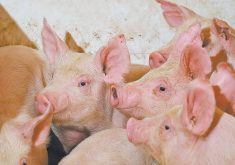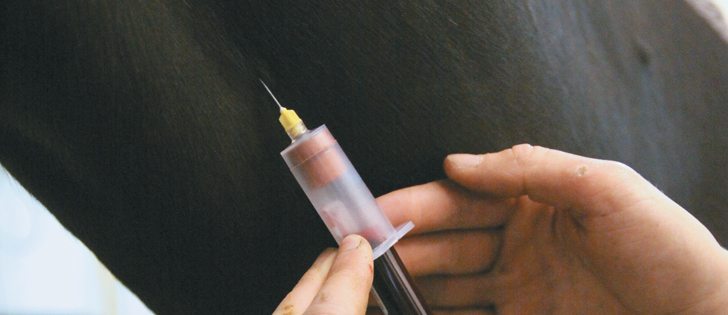The re-emergence of swine dysentery in Western Canada has officials reminding producers about the importance of biosecurity.
The disease was first discovered in the 1970s, but incidents have been rare on the Prairies since the mid-1990s.
However, there have been 25 cases in Saskatchewan and Alberta since 2009, said John Harding of the University of Saskatchewan’s Western College of Veterinary Medicine.
Alan Theede, research co-ordinator for the Canadian Swine Health Board, said some of the farms appear to have a connection, such as animal transport and use of the same breeding stock.
Read Also

Beef check-off collection system aligns across the country
A single and aligned check-off collection system based on where producers live makes the system equal said Chad Ross, Saskatchewan Cattle Association chair.
“Some don’t. Some just appear to be completely on their own and that’s making it harder to explain why that pops up,” he said.
The disease, caused by brachyspira hyodysenteriae, is common in pigs from 12 to 75 kilograms and occasionally appears in sows and piglets. It targets the animal’s large intestine, causing bloody diarrhea and affecting its growth rate and feed conversion.
The infection is not associated with high mortality, but it can be costly for producers because there is no vaccine and must be treated with medication.
“We talk about $7 or $8 added cost of production to get a pig to market,” said Theede.
Added Harding: “Once a farm is infected, it’s typically infected forever until the farm does some sort of eradication procedure, which is possible, but it’s not the easiest disease to eradicate.”
Herds can catch the disease through the ingestion of infected feces or from carrier pigs that shed the bacteria in feces. This makes biosecurity paramount.
Alberta Pork recommends that all breeding herd purchases be tested and that all transports on the farm be cleaned, washed and disinfected.
Birds, dogs, flies, mice and footwear can also be sources of contamination.
“Most of the farms that are breaking down are fairly biosecure farms and yet there’s still some sort of breach occurring,” said Harding. “Be vigilant. Evaluate what you’re doing because something is not being done right.”
Harding said there have been no reported cases of swine dysentery in British Columbia and Manitoba, but the disease has appeared more widespread in the U.S. Midwest and the United Kingdom.
“Why and how bloody diarrhea caused by brachyspiras has re-emerged is a big question for all of us,” said Harding.
He said it’s possible improved biosecurity with larger operations had reduced outbreaks or that other medications masked the disease.
“It’s probably been there in a low degree for a long time, just at a subclinical level,” said Theede.
“For some reason it’s flared up or been transmitted a little bit and we’ve put a lot of emphasis on it. It’s not that it’s a huge thing or that it’s out of control or anything like that.”
















